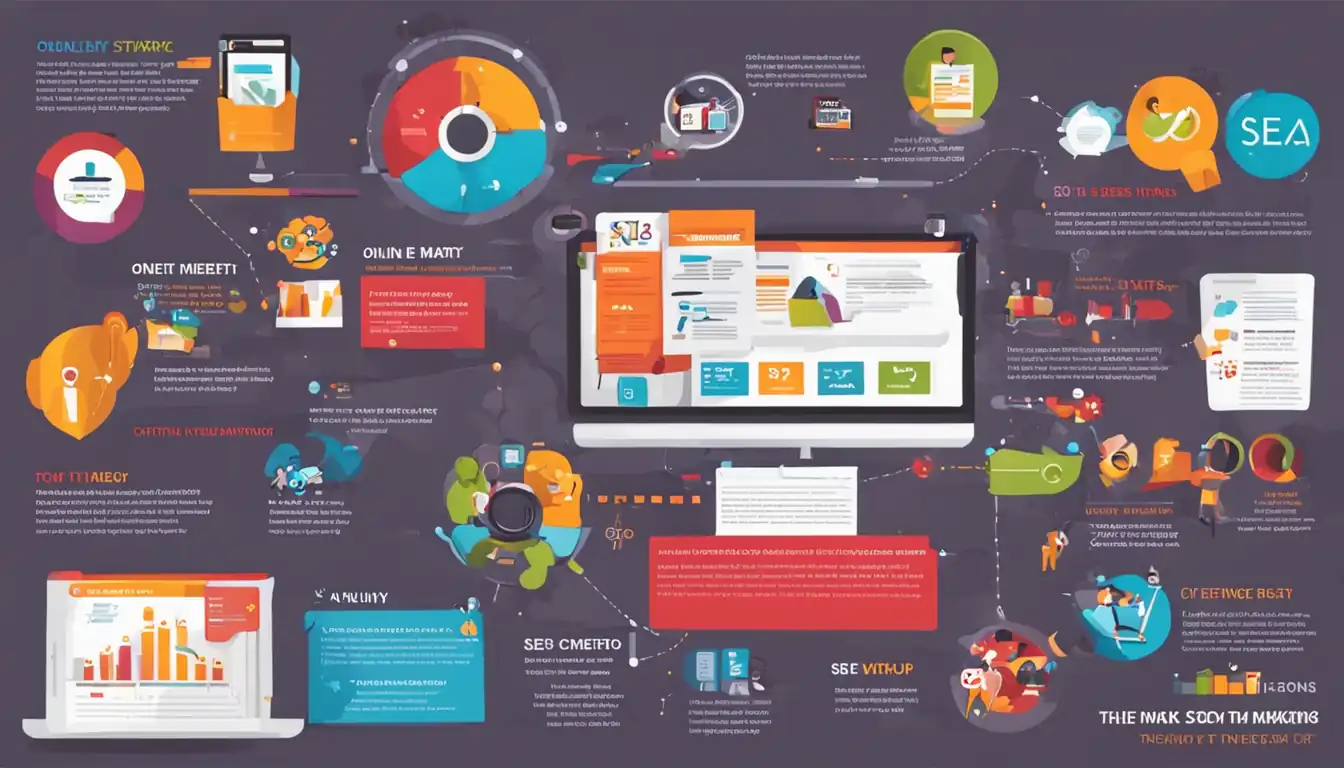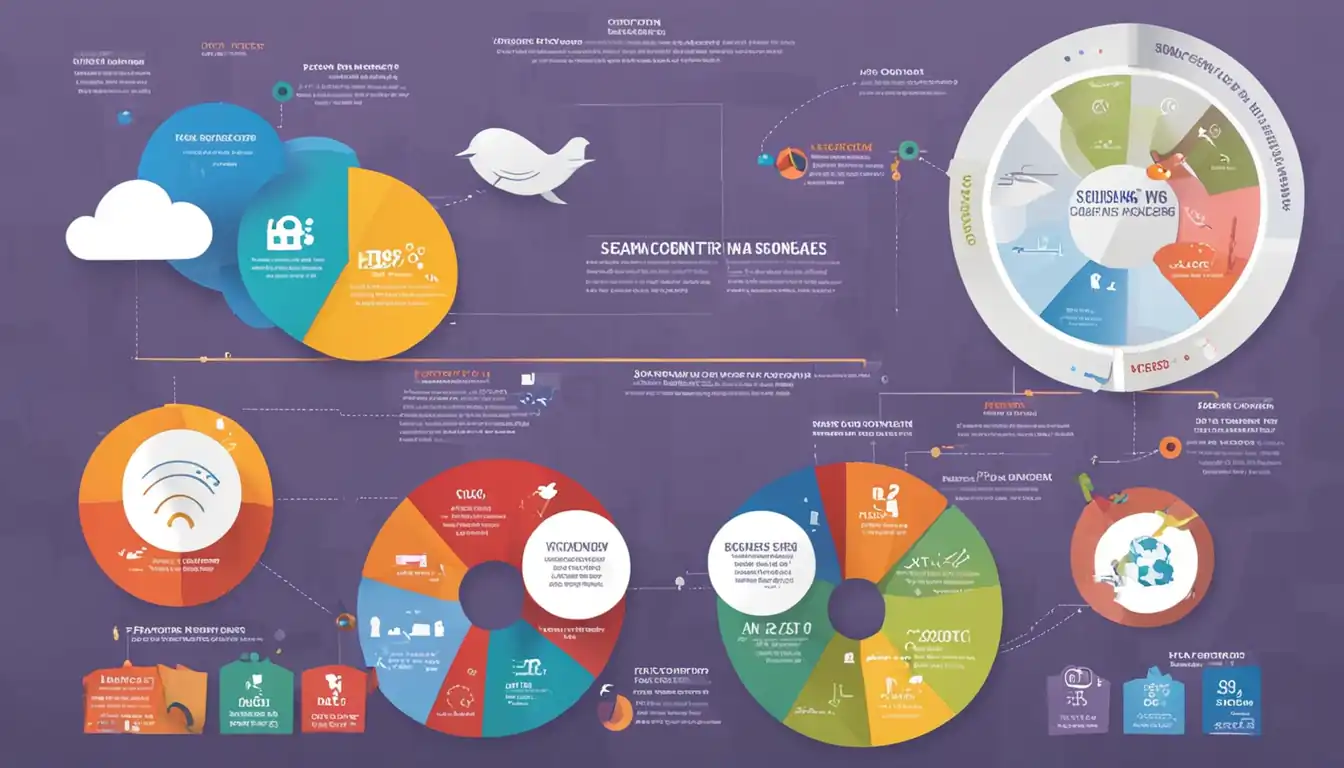SEO Content Best Practices for Captivating Your Audience

In the vast world of digital marketing, SEO content is like the secret sauce that can make or break your online presence. Crafting content that not only ranks well on search engines but also captivates your audience is a fine art that requires a delicate balance of creativity and strategy. So, buckle up as we dive into the realm of SEO Content Best Practices to help you conquer the digital landscape with finesse.
Understanding SEO Fundamentals

Search Engine Optimization (SEO) is the practice of optimizing your website content to improve its visibility and ranking on search engine results pages. It is crucial for content because it helps drive organic traffic to your site, increases brand awareness, and boosts credibility.
What is SEO and Why is it Crucial for Content?
SEO involves various strategies and techniques that help search engines understand the relevance of your content to users' search queries. By implementing SEO best practices, you can ensure that your content reaches a wider audience and attracts more visitors to your site.
Core Elements of SEO You Can't Ignore
Keyword Research: Identifying relevant keywords that align with your content and target audience is essential for SEO success. Use tools like Google Keyword Planner or SEMrush to discover high-volume keywords with low competition.
Quality Content: Creating high-quality, engaging, and informative content is key to captivating your audience and improving your search engine rankings. Make sure your content is well-written, relevant, and provides value to readers.
On-Page Optimization: Optimizing meta titles, descriptions, headings, and image alt text with targeted keywords can improve the visibility of your content in search results. Ensure that your URLs are SEO-friendly and include relevant keywords.
Mobile-Friendliness: With the increasing use of mobile devices, it's crucial to have a responsive website design that provides a seamless user experience across all devices. Google prioritizes mobile-friendly websites in its search rankings.
Link Building: Building quality backlinks from reputable websites can boost your site's authority and credibility in the eyes of search engines. Focus on earning natural backlinks through guest posting, influencer collaborations, or creating shareable content.
Incorporating these core elements of SEO into your content strategy will not only help you attract more traffic but also engage and retain your audience effectively.
Crafting High-Quality Content

When it comes to SEO content, quality is key. Here are some best practices to keep in mind:
Balancing Keywords with Natural Flow
Finding the right balance between incorporating keywords for SEO and maintaining a natural flow in your content is crucial. Here are some tips to help you achieve this balance:
- Conduct keyword research to identify relevant keywords for your topic.
- Integrate keywords naturally throughout your content, avoiding keyword stuffing.
- Use variations of your main keywords to create a more diverse and engaging piece of content.
Ensuring Your Content is Informative and Engaging
In addition to optimizing for search engines, it's important to ensure that your content is informative and engaging for your audience. Here are some strategies to captivate your readers:
- Provide valuable information that answers questions or solves problems for your audience.
- Use storytelling techniques to make your content more relatable and engaging.
- Incorporate visuals such as images, videos, and infographics to enhance the overall user experience.
By following these best practices, you can create SEO content that not only ranks well in search engines but also captivates and engages your audience.
On-Page Optimization Techniques

Optimizing Titles and Meta Descriptions for Better CTR
Crafting compelling titles and meta descriptions is crucial for capturing the attention of your audience. These elements are the first things users see in search engine results, so they need to be engaging and relevant to entice clicks. Incorporate target keywords naturally into your titles and meta descriptions to improve visibility and click-through rates.
Using Header Tags to Improve Readability
Header tags (H1, H2, H3, etc.) not only help search engines understand the structure of your content but also make it easier for readers to navigate through your page. Use header tags strategically to break up content into digestible sections and guide users through the key points of your article. This improves readability and keeps readers engaged with your content.
Strategic Keyword Placement

When it comes to SEO content, strategic keyword placement is crucial for captivating your audience. By strategically incorporating relevant keywords into your content, you can improve your search engine rankings and attract more organic traffic to your website.
Finding the Right Keywords without Stuffing
It is essential to find the right keywords for your content without overstuffing them. Keyword stuffing can negatively impact the readability of your content and may result in penalties from search engines. To avoid this, conduct thorough keyword research using tools like Google Keyword Planner or SEMrush to identify relevant keywords with high search volume and low competition.
Long-Tail vs Short-Tail Keywords: A Tactical Discussion
When selecting keywords for your SEO content, consider the difference between long-tail and short-tail keywords. Short-tail keywords are broad terms that typically have high search volume but also high competition. On the other hand, long-tail keywords are more specific phrases that have lower search volume but higher conversion rates.
Incorporating a mix of both long-tail and short-tail keywords into your content strategy can help you reach a wider audience while also targeting potential customers who are further along in the buying process.
Enhancing User Experience for SEO Benefits
In the world of SEO content, user experience plays a crucial role in captivating your audience. By focusing on enhancing user experience, you not only improve engagement but also boost your search engine rankings.
Mobile Optimization and Its Impact on Rankings
Mobile optimization is no longer just a nice-to-have; it's a necessity in today's digital landscape. With the majority of internet users accessing content through mobile devices, ensuring that your website is mobile-friendly is essential for captivating your audience.
Key Points for Mobile Optimization:
- Use responsive design to ensure your site looks great on all devices.
- Optimize images and videos for faster loading times on mobile.
- Implement AMP (Accelerated Mobile Pages) to enhance speed and performance.
Page Speed: Making Your Site Swift and Smooth
Page speed is another critical factor in enhancing user experience and improving SEO rankings. A slow-loading website can lead to high bounce rates and decreased user engagement, ultimately impacting your search engine visibility.
Tips for Improving Page Speed:
- Minimize HTTP requests by reducing the number of elements on each page.
- Enable browser caching to store frequently accessed resources locally.
- Compress images and files to reduce load times.
- Use a content delivery network (CDN) to distribute content geographically for faster access.
By focusing on mobile optimization and improving page speed, you can create a seamless user experience that captivates your audience and boosts your SEO efforts.
Leveraging Multimedia in SEO Content
In today's digital age, incorporating multimedia elements into your SEO content is crucial for captivating your audience. By leveraging images and videos effectively, you can enhance user engagement and improve the overall user experience on your website.
The Power of Images and Videos in Engagement
Images and videos have the ability to convey information quickly and effectively, making them essential components of compelling SEO content. Visual content not only breaks up text-heavy pages but also helps to keep visitors on your site longer. Including relevant images and videos can increase dwell time, reduce bounce rates, and ultimately improve your search engine rankings.
Alt Texts and File Names: Small Tweaks, Big Gains
When adding images to your SEO content, don't overlook the importance of optimizing alt texts and file names. Alt texts provide a textual description of an image for visually impaired users and search engines to understand the context of the image. Including relevant keywords in alt texts can also improve your chances of ranking higher in image searches.
Similarly, using descriptive file names for your images can help search engines better understand the content of the image. Avoid generic file names like "IMG_001.jpg" and instead opt for descriptive names that include relevant keywords related to the image.
By paying attention to these small details when incorporating multimedia elements into your SEO content, you can significantly enhance user engagement and improve the overall effectiveness of your content marketing strategy.
Link Building within Your Content

Internal Links: Connecting Your Own Dots
Internal links are a crucial aspect of SEO content best practices as they help to connect different pages within your website. By strategically placing internal links throughout your content, you can guide your audience to other relevant pages on your site, increasing engagement and reducing bounce rates. When creating internal links, make sure they are relevant and add value to the reader's experience.
External Links: Citing Sources and Building Authority
External links are equally important in SEO content as they help to build credibility and authority. When citing sources or referencing external websites, be sure to use reputable sources that are relevant to your content. This not only adds credibility to your own content but also helps search engines understand the context of your writing. Remember to use a mix of both internal and external links for a well-rounded linking strategy.
Regular Updates and Content Audits

The Importance of Keeping Content Fresh
In the world of SEO, keeping your content fresh and up-to-date is crucial for maintaining a strong online presence. Search engines like Google prioritize websites that regularly update their content, as it shows that the site is active and relevant. By consistently publishing new content, you can attract more visitors to your site and improve your search engine rankings.
How to Conduct an Effective Content Audit
- Start by compiling a list of all the content on your website: This includes blog posts, articles, product descriptions, etc.
- Evaluate the performance of each piece of content: Look at metrics such as traffic, engagement, and conversions to determine which pieces are performing well and which ones need improvement.
- Identify outdated or irrelevant content: Remove or update any content that is no longer relevant or accurate.
- Optimize existing content for SEO: Make sure that all of your content is optimized for relevant keywords and includes meta tags and descriptions.
- Create a content calendar for regular updates: Plan out when you will publish new content and stick to a consistent schedule.
By conducting regular content audits and updating your website with fresh, high-quality content, you can keep your audience engaged and improve your SEO rankings.
Monitoring Performance to Refine Strategy
Monitoring the performance of your SEO content is crucial in refining your strategy and ensuring that you are effectively captivating your audience. By analyzing key metrics, you can make informed decisions on how to optimize your content for better engagement and visibility.
Tools Every SEO Expert Should Use
Utilizing the right tools is essential for monitoring the performance of your SEO content. Here are some must-have tools for every SEO expert:
- Google Analytics: Provides valuable insights into website traffic, user behavior, and conversion rates.
- Google Search Console: Offers data on how your site appears in Google search results and helps identify issues that may be affecting your site's performance.
- SEMrush: A comprehensive tool for keyword research, competitor analysis, and tracking rankings.
- Ahrefs: Helps with backlink analysis, keyword research, and content optimization.
- BuzzSumo: Allows you to analyze trending topics and see what content performs well in your industry.
By using these tools effectively, you can track the performance of your SEO content and make data-driven decisions to improve its effectiveness.
Interpreting Data to Enhance Future Outputs
Interpreting the data gathered from monitoring tools is key to enhancing future outputs of your SEO content. Here are some tips for interpreting data effectively:
- Look for patterns in user behavior such as popular keywords or high-performing pages.
- Analyze conversion rates to see which pieces of content are driving action from users.
- Monitor bounce rates to identify areas where users may be losing interest.
- Track social shares and engagement metrics to gauge audience interest.
By interpreting this data accurately, you can gain valuable insights into what resonates with your audience and tailor future content to better captivate them.
Conclusion
By implementing these SEO Content Best Practices, you'll not only boost your search engine rankings but also create a captivating online experience for your audience. Remember, SEO is not just about keywords and links; it's about delivering valuable and engaging content that resonates with your target audience. So, keep refining your strategies, monitoring performance, and staying ahead of the curve to ensure long-term success in the ever-evolving world of digital marketing.